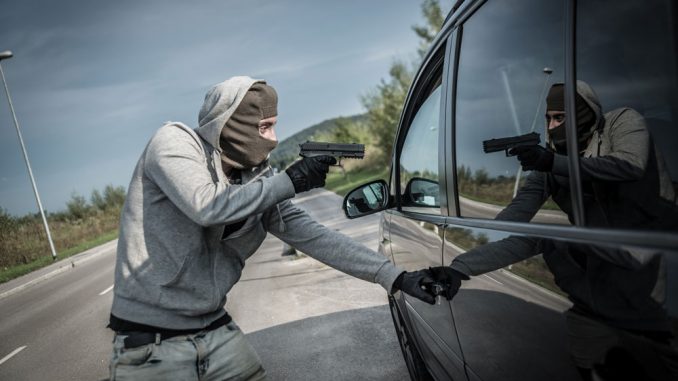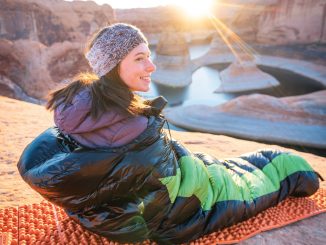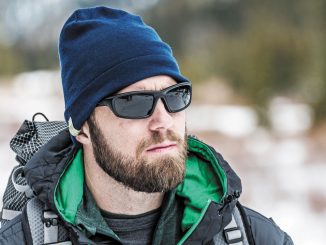
In last month’s American Survival Guide, I wrote an article describing the history and mission of the U.S. Army Special Forces SERE (Survival, Evasion, Resistance and Escape) School and some of the training it conducts.
This month, I will expand on that by sharing with you some of the SERE School lessons Green Berets are taught. I honestly believe they are relevant and useful for all Americans, whether we’re planning for an isolated emergency or the end of the world as we know it. I can’t discuss every lesson these soldiers learn at the school, but I have picked a few key survival, evasion, resistance and escape topics I think are the most beneficial for ASG readers.
Survival: Water Purification
In survival situations, water is one of the most precious commodities you need. Depending on environmental factors and exertion levels, the human body can only survive for about three to seven days—at the longest—without water. Because of this, you need to make finding and purifying water a priority in situations where this essential liquid is not readily available.
… MANY OF THE LESSONS TAUGHT IN SERE SCHOOL GO FAR BEYOND MILITARY APPLICATIONS …
I say, “purify,” because all too often, people skip the purifying part of the process and go directly to drinking after filtering. I can see where they get this idea: Television is filled with so-called survival “experts” who drink any water at the first sign of it without taking the time to purify it. I’m not sure if this is for the sake of ratings or if these guys just don’t know what they are doing, but I will say that you should always purify your water before consumption, regardless of how bad the urge is to wet your whistle.

If you think you’re being followed, avoid turning to look for, or at, your pursuer, because this will let them know you’ve seen them. In turn, that could accelerate their efforts to catch you.
Waterborne diseases and parasites can not only put you at risk of illness, they can also cause you to have explosive diarrhea and even dysentery. Take it from me: That is no fun, and it will speed your rate of dehydration tenfold. In a survival situation, that can be the final nail in your coffin.

Often, the best chance to escape is right at the time of capture.
So, the next time you see some naked guy on TV drinking straight from the source, remember that at best, he will be back in civilization as soon as the shoot is over; at worst, he has medical help available just a few steps away. In a real-life situation, you’ll have no idea how long your survival situation is going to last, and you might truly be on your own.
Here are seven ways to purify your water prior to drinking it:
- Boil Raw Water
Boiling water is one of the most surefire ways to ensure your water is safe to drink. While many blogs, books, articles and instructors say to boil it for five minutes, the truth is that once your water has been at a rolling boil for one minute, it is purified of all biological contamination. Cool it to a temperature that is comfortable for you and drink it.
Note that boiling will have no effect on chemical contaminants, so you’ll need to address that concern separately, as described in the following sections.
- Chemical Treatment
If you don’t have over-the-counter water treatment chemicals (such as iodine, sodium chlorite, hydrogen peroxide or potassium permanganate), you can use simple, unscented household bleach in a dropper. Be sure to mark the dropper clearly as containing bleach so it is not accidentally used for eye drops. (See the “Water to Bleach Ratio” sidebar below for specific safe proportions.)
- Distillation
Distillation is one of the most reliable methods of purifying water. While boiling water will kill biological contaminants, you might want to utilize the distillation process when you are trying to desalinate salt water or when there are chemical contaminants in the water (for instance, heavy metals such as lead, mercury and arsenic). You can make a still using a copper tube coil running from a stainless steel container filled with salt water or contaminated water to another container used to catch the distilled water. Put the contaminated water container over heat until it boils. The fresh water, in the form of steam, will run through the coil tube, condense back to liquid and drip into the water-catch container that will hold your decontaminated water.
- Personal Water Filters
Personal water filters clean a very high percentage of contaminants from water, and they are compact and easy to use. You can find many great models on the market today, including the Etekcity 1500L, Survivor Filter Pro, LifeStraw personal water filter, Sawyer S3 Foam filter or, for a model with a really high output, take a look at the Katadyn Pocket water filter, which purifies up to a whopping 13,000 gallons.
IN SURVIVAL SITUATIONS, WATER IS ONE OF THE MOST PRECIOUS COMMODITIES … YOU NEED TO MAKE FINDING AND PURIFYING WATER A PRIORITY IN SITUATIONS WHERE THIS ESSENTIAL LIQUID IS NOT READILY AVAILABLE.

Another trick to evading capture is to use waterways to try to hide your trail and attempt to throw off anyone who might be tracking you.

You can only survive about three days without water. When venturing out into the wilderness, it is wise to take a personal water filter with you for emergency situations.
- Charcoal, Sand and Leaf Filter
This filter is one of the most primitive ways to clean your water, but keep in mind that it will only remove large particulates and is not guaranteed to get rid of biological and chemical contaminates.
To make one of these filters, simply fill a container or a sock with layers of sand, finely crushed charcoal and green leaves. The more layers the better. Make sure the bottom layer of the container is made with green leaves so you don’t get sand or charcoal in your drinking water. Pour raw water into the top and puncture a hole in the bottom to allow filtered water to flow into a separate clean drinking container. Use this method only if you are simply trying to remove particulates or if there is no other possible means of filtering your water prior to consumption.
- Solar Still
To make a solar still, simply dig a hole in the ground and place a clean, empty container for harvested water in the center of the hole. Next, cover the hole with a plastic sheet and use rocks or sand at the edges to hold it in place over the hole. Then place a small rock in the center of the sheet directly over the empty container.
When the sun shines on the plastic, it will draw water out of the earth and cause it to gather on the underside of the plastic. The rock in the center will force the water to gather and drip into the container. You can speed up this process by putting a few green leaves on a twig or pouring some raw water on the ground under the plastic sheet.
- UV Light
You can purify your water using UV light by purchasing a battery-operated UV water purifier such as the Steripen. UV-light water purifiers are lightweight, compact and easy to use. They can purify your drinking water of up to 99.999 percent of all biological contaminants, including campylobacter, cholera, cryptosporidium, escherichia coli, Shigella, salmonella, hepatitis, protozoa parasites and other biological viruses.
To use, simply place the unit in the water container and turn it on. Be sure to follow the time-to-water volume ratio that comes with the instructions.
Evasion
Because we often focus on rural and woodland survival techniques, I wanted to discuss an area that is covered in depth in SERE School: urban evasion. A person might find themselves in a situation where others are following them on foot or in a vehicle in an urban setting. Once they learn your routes, they will use that knowledge to their advantage. They might not even be following behind you; but, by anticipating your route, they might have cars or people all along your expected route.
IF THERE IS REASON TO BELIEVE YOU ARE BEING FOLLOWED, AN OPTION IS TO TURN ON THE VEHICLE’S TURN SIGNAL. THEN, AT THE LAST SECOND, GO STRAIGHT AND SEE IF THE OTHER VEHICLE FOLLOWS.
Please Note: We do not advocate breaking traffic and safety laws or purposely putting others in danger. Some of the following options are for consideration by those who determine their safety and security are at grave risk and are among the only remaining methods of preventing abduction, attack or worse.
You have a better chance of “losing a tail” if you follow these simple rules:
You must determine if there is an individual or team following along your route. You can do this by varying your pace and noting if the potential follower varies their pace. Turn in the opposite direction to see if they still follow or stop to tie your shoe in front of a store window, using the reflection to see the reaction of any person who might be following you.

A highly efficient way to evade capture is to simply blend into a crowd in order to lose a pursuer.
If you determine there is a person following you, continue to walk, make a mental note of what the follower looks like, and, as always, call the police if possible.
Try to speed up and duck out of sight. Once you are out of sight, do everything possible to change your appearance. If you’re wearing a jacket, take it off. The same applies to hats, sunglasses or even eyeglasses, if you can manage without them. Do whatever is possible to look different from what the follower is expecting.

The first step for maintaining personal security when you’re out in the public is to be aware of what’s going on around you. Don’t let your phone or other distractions reduce your focus down to your personal space.
Once you change your appearance, you should continue moving quickly. Go into a crowded area such as a shopping market and then immediately go out through another exit. Go upstairs and through hallways, doubling back occasionally. Try to confuse those attempting to follow.
As an absolute final option, you should hide somewhere that decreases the likelihood of discovery and wait awhile before going back out again.

If you’re trying to evade a suspicious person while driving, stay calm and look for ways to separate from them— primarily at intersections, entrances and exits on freeways. If possible, contact the authorities to find a nearby police station.
If you are driving a car, you can make several turns off your intended route to see if the “tail” follows. If there is reason to believe you are being followed, an option is to turn on the vehicle’s turn signal. Then, at the last second, go straight and see if the other vehicle follows.

Even if it’s not physically possible, never stop planning to escape. It will keep your mind sharp during what could be a lengthy captivity.
Trying to outrun another vehicle is unsafe and will most likely only place innocent people in danger. Instead, drive unpredictably: Make left turns when signaling a right turn, and go straight when indicating a turn. Slow down at a busy intersection just as the light changes. As soon as the light is about to go from yellow to red, drive through the intersection before the other cars have a chance to go. This technique will often leave your pursuers stranded at the light. Eventually, you will lose those who are following. If not, drive directly to the authorities. Alternatively, park the vehicle and then evade on foot and try to lose them.
Resistance
I won’t go into great detail on this topic, because, quite frankly, the majority of information available on the subject is classified secret and is not authorized for public release.
THE BEST THING HOSTAGES CAN DO IS TO “HUMANIZE” THEMSELVES BY ESTABLISHING WHAT I LIKE TO CALL “ONE-SIDED RAPPORT” WITH THEIR CAPTOR(S).
That said, there are some resistance topics that are open source, such as how to handle yourself in a hostage situation, so I have included that topic here.
This can be a very dangerous situation, particularly if a person is being held by an extremist group or a mentally deranged individual. The best thing hostages can do is to “humanize” themselves by establishing what I like to call “one-sided rapport” with their captor(s).

A captor might try to isolate you from other captives in order to break you down psychologically. It’s extremely important to remain mentally vigilant in a captivity situation; you might need to rely on your wits and your internal will in order to survive.
However, if you are captured, always remain cognizant of the possibility of Stockholm Syndrome. This occurs when a captive begins to feel so much empathy for their captor that they begin to side with the captor’s cause—as in the famous case of Patricia Hearst.

Tracking dogs are extremely efficient at locking onto human scent and leading a pursuer to an evader. However, they are generally limited to the speed and mobility of their human handlers.
The key for a captive is to get the captor to see them as a human being. This can be accomplished by being friendly and talking about non-inflammatory subjects such as missing one’s family, sports or any number of things. Stay away from hot-button topics such as politics and religion.

In the event of a rescue attempt, try to stay low; and, for your own protection, keep your hands empty and visible to the rescue force.
Gauge the captor’s responses, and if something seems to be a sensitive subject, back away and talk about something else. Do not give up; it could take days, weeks or even months or longer to establish rapport. In a hostage situation, doing this could save your life.
Escape
When it comes to escape, it is important to keep your wits about you, assess the situation and come up with a plan of action.
If you are thrown into a car, immediately try to open the door on the other side of the car, because that door is often left unlocked to allow another kidnapper to enter from the far side of the vehicle. If possible, you can use your feet and the strength of your legs to kick out the rear window and then throw yourself out of the vehicle and make a run for safety. If thrown into a van, attempt to use the momentum to power through the back doors. You might break a rib or dislocate a shoulder, but that might be better than what you could face in captivity.

The ability to start a fire during inclement weather could be the difference between life and death in a survival situation.
If nothing else, make a scene. Try screaming out commands such as “Leave me alone!” or “Call the police!” Fight back by kicking, scratching, biting, small-joint manipulation—such as bending back a pinky and breaking it; even grabbing onto stationary objects and not letting go; or using whatever you can find as a weapon to fight your abductor(s). Anything you can do to escape is fair game.

Traps and snares can add small game to your survival diet and will greatly enhance your chances of feeding yourself when food is not readily available.

Poisonous snakes, such as rattlesnakes, can be found throughout the United States and pose a dangerous threat to unsuspecting humans.
Once you have committed to escape, try running into a crowd of people, if that is an option, or toward a police officer or anyone of authority in order to help persuade your pursuer to give up the chase.
WHEN IT COMES TO ESCAPE, IT IS IMPORTANT THAT YOU KEEP YOUR WITS ABOUT YOU, ASSESS THE SITUATION AND COME UP WITH A PLAN OF ACTION.
SERE School is only for those members of the military who are at the highest risk of being captured and might need to escape and evade enemy captivity. However, many of the lessons taught in SERE School go far beyond military applications—as evidenced by the popularity of various versions of SERE manuals available in print.
Within those teachings are lessons to be learned by anyone who wants to be capable of surviving any situation that life throws their way.
Water-to-Bleach RATIO
| Volume of Water | Amount of Bleach to Add* |
| 1 quart | 2 drops |
| 1 gallon | 8 drops |
| 5 gallons | ½ teaspoon |
| 10 gallons | 1 teaspoon |
| 50 gallons | 5 teaspoons |
*Repeat once after 30 minutes if the water is still cloudy. Discard water if it is not clear after that.
Editor’s note: A version of this article first appeared in the March, 2018 print issue of American Survival Guide.






Be the first to comment